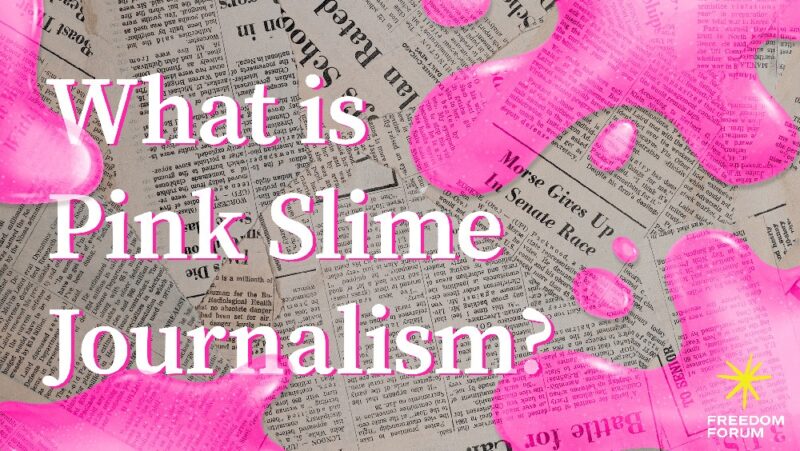Seven Pioneering Journalists Who Championed Civil Rights

Journalists bring us the news and help shape public conversation about issues of social importance. And if we feel newspapers, magazines, TV and other news media don’t reflect us or the issues our communities care about, then we each can turn to our own freedom of the press.
Today, we can publish our views on social media, contribute to the conversation with letters to the editor or even start our own publications.
During the civil rights movement’s push for racial equality, Black journalists like those highlighted below broke barriers in predominantly white organizations or created their own news outlets. These civil rights journalists broadened the conversation and reshaped the news.
Discover 7 civil rights journalists who helped break barriers
Alice Dunnigan challenges the White House on civil rights
Alice Dunnigan faced an uphill battle from her upbringing in segregated Kentucky to Washington, D.C., but she became the first Black woman to cover the White House, the Supreme Court and Congress.
She earned half the pay of the men she worked with. President Dwight D. Eisenhower famously avoided her tough questions. In 1948, she was the only Black reporter on Harry S. Truman’s campaign train.
As a civil rights journalist, Dunnigan’s work for the Associated Negro Press, which provided stories to newspapers around the world, enriched the coverage of key issues at the dawn of the civil rights movement.
“Race and sex were twin strikes against me.” – Alice Dunnigan, who, in 1947, became the first Black woman to be a White House reporter.
Ethel Payne is the First Lady of the Black Press
Ethel Payne worked for The Chicago Defender when she arrived in Washington, D.C., in 1953, to cover the White House.
The “first lady of the Black press” worked at a time when there were few Black reporters, and even fewer Black women, covering the White House. President Eisenhower, as with Alice Dunnigan, avoided calling on her at news conferences.
Payne brought her tough questions to radio and TV as the first Black woman commentator on a national network, CBS, in 1970.
The Chicago Defender was founded by Robert Sengstacke Abbot in 1905. The publisher was a leading voice in urging Blacks in the South to move north. So many readers did so that the paper was frequently confiscated and banned. Abbot kept the paper circulating in the South by enlisting Black Pullman porters — railroad sleeping-car attendants — to drop newspapers at key locations.
David Jackson starkly shows racial violence
After 14-year-old Emmett Till was beaten to death by white racists in Money, Miss., his mother, Mamie Bradley, insisted that her son’s casket be open. She wanted the world to see what racism did to him.
David Jackson, a staff photographer for Jet magazine, photographed the funeral. When Jet published Jackson’s photos of Till’s body in its Sept. 15, 1955, issue, it laid bare the violence the Black teen suffered and sparked outrage over the racist murder.
Gordon Parks publishes provocative photos of segregation
Gordon Parks was the first Black man to work at Life magazine – and one of the most provocative photographers of his era.
His focus on the crushing toll of poverty and racial segregation opened the eyes of the magazine’s predominantly white readers.
His 1942 photo of a Black cleaning woman in Washington, D.C., became famous as a symbol of inequality in America. In 1956, the magazine published his powerful photo essay about segregation, bringing the realities of poverty and inequity to readers.
Maurice Sorrell integrates the White House News Photographers Association
Maurice Sorrell became a freelance photographer after he faced discrimination that limited his opportunities as a photographer for the Pentagon.
His photos captured key moments in the civil rights movement like the march to Selma, Ala. Later, he was barred from the White House News Photographers Association – until President John F. Kennedy was pressured to intervene. Kennedy threatened to boycott the association’s annual awards dinner, and Sorrell became the first Black WHNPA member in 1961.
Robert Richardson helps L.A. Times earn a Pulitzer Prize
The Los Angeles Times had no Black reporters when violence between police and residents of Black communities erupted in August 1965. A young Black sales messenger, Robert Richardson, stepped up to cover what Life magazine called “the most destructive race riots in U.S. history.” Over six days, 34 people were killed, 1,000 injured and nearly 4,000 arrested.
Richardson dodged bullets to phone in his eyewitness accounts. His stories helped the Times earn a Pulitzer Prize – and left the civil rights journalist deeply torn and troubled.
Moneta Sleet Jr.’s iconic photo breaks journalism’s Pulitzer Prize barrier
Moneta Sleet Jr.’s Pulitzer Prize for journalism was the first for a Black photographer – and the winning photo almost didn’t happen.
When Coretta Scott King discovered that the press pool covering her husband Martin Luther King Jr.’s funeral included no Black photographers, she said that if Sleet, a veteran Ebony magazine photographer, wasn’t allowed in the church, there would be no photographers, period.
The photo Sleet took of King consoling her daughter Bernice was awarded the 1969 Pulitzer Prize for feature photography.
“If I hadn’t been there working, I would have been off crying like everybody else.” – Moneta Sleet Jr.
These civil rights journalists – and many more – have turned to the power of the press to demonstrate the importance of protecting fundamental freedoms for all.
Meet the 2023 Al Neuharth Free Spirit and Journalism Conference Scholars
Pink Slime Journalism: Separating Ethical News From Propaganda
Related Content
$30,000 Giving Challenge
Support the Freedom Forum’s First Amendment mission by Dec 31st and double your impact.

